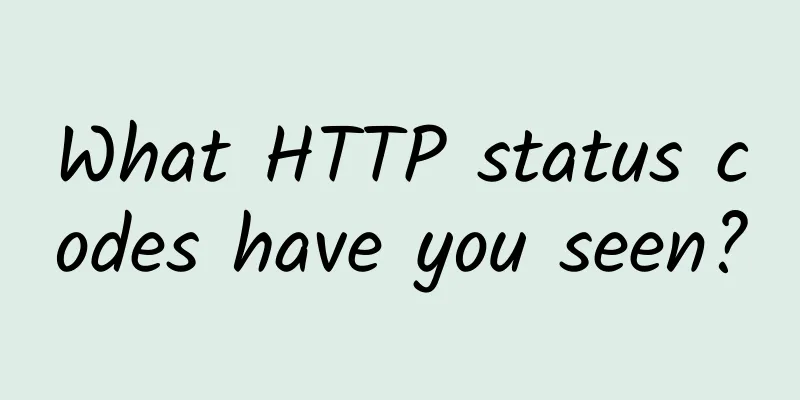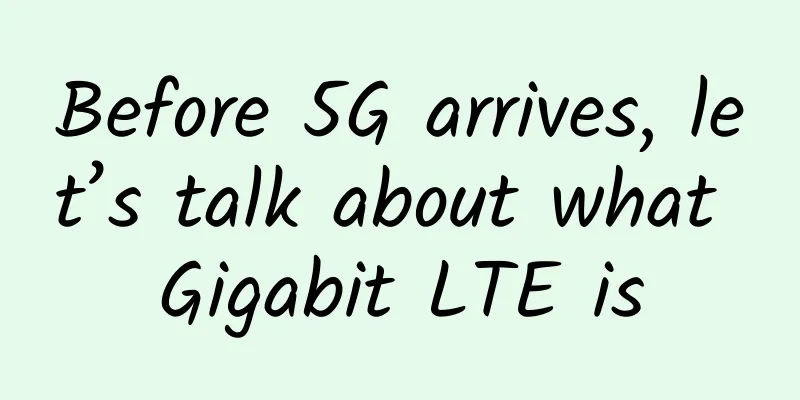What HTTP status codes have you seen?

101 Switch Protocol Upgrade the protocol, such as from http to ws Example: 101 200 OK Indicates that the resource request was successful Example:
201 Created Resource creation is successful, mostly used for POST requests 204 No Content The response will not return the Body, generally due to the following two situations
Example 1: Nuggets sets the status code for Options request to 204 Nuggets sets the status code for Options requests to 204 Example 2: Zhihu sets the status code for the Delete request to 204. The following request is to unfollow Nuggets sets the status code for Delete requests to 204 Example 3: When you are reading a joke on Zhihu, you might as well open the console and find a status code of 204
206 Partial Content When the requested multimedia data is large, it will be transmitted in segments. When you watch a video on Bilibili and open the developer tools, you will find many 206 status codes and response headers Content-Range. Example: The status code of the video resource request on Station B is 206 301 Moved Permanently Permanent redirection. 301 is sometimes used when http is redirected to https, such as Bilibili.
302 Found Temporary redirection. 302 is sometimes used when http is redirected to https, such as Zhihu
304 Not Modified The resource has been cached, and the relevant response headers are:
Generally used for resources without hash, such as index.html. Since there are too many examples, I will not give them here. 307 Temporary Redirect Temporary redirection. It can also be used as a redirect from http to https. Another use is HSTS. When Google Chrome finds that a certain http resource has been added to the HSTS list, the browser will redirect via 307. Example: HSTS for Shanyue's personal blog 307 in Stackoverflow What is the difference between http status codes 301, 302 and 307?
400 Bad Request Can be used for API parameter verification 401 Unauthorized When an unauthorized user requests a resource that requires authorization, a 401 error message will be returned. Trying again with the correct authorization credentials can resolve the issue. When Zhihu login fails 403 Forbidden I just don't want you to have access, regardless of whether your credentials are correct! In summary, a 401 Unauthorized response should be used for missing or bad authentication, and a 403 Forbidden response should be used afterwards, when the user is authenticated but isn't authorized to perform the requested operation on the given resource.
404 Not Found Resource not found 405 Method Not Allowed I need to POST this resource, you go to GET hammer 413 Payload Too Large Don't throw such a big body at me, I can't handle it 418 I'm A Teapot I am a teapot I throw coffee and you throw me a teapot? It can also be used to handle illegal parameter validation. I wanted a string, but you gave me an integer? 422 Unprocessable Entity Often used to handle illegal parameter verification. When liking a project on Github, if you intentionally set an incorrect parameter name, the status code 422 will be returned. 422 500 Internal Server Error An internal error occurred on the server. It is very likely that the application layer did not catch the error and caused the entire service to crash. 502 Bad Gateway Gateway timeout, common on Nginx, a response was returned from the upstream application layer 503 Service Unavailable The service is busy due to heavy traffic. Please wait a moment and it may be available again. 504 Gateway Timeout The gateway timed out and the upstream application layer did not respond. This article is reprinted from the WeChat public account "Full Stack Growth Road", which can be followed through the following QR code. To reprint this article, please contact the Full Stack Growth Road public account. |
<<: SASE vs. SD-WAN: Which one do you pick?
>>: An article to help you understand HTML5 MathML
Recommend
Eleven years of Tianyi Exhibition: How China Telecom plans for the future of 5G
In June this year, the Ministry of Industry and I...
Pour some cold water on the "feverish" 5G concept: the market is far from mature
The popularity of 5G networks, 5G mobile phones, ...
China Mobile completes R16 version 2.6G+700M SUL uplink enhancement test
Recently, China Mobile and MediaTek completed the...
Wangsu Security: To prevent the “barrel effect” in network security, how can enterprises build “systematic security”?
Recently, a technical exchange meeting on Wangsu ...
VMISS adds 30% off on Tokyo data center in Japan, and monthly VPS in Los Angeles CN2 GIA/AS9929/Hong Kong/Korea/Japan starts from 3.5 Canadian dollars
VMISS recently added a second node in Japan, Toky...
The demand for optical fiber and cable market is higher than expected, and my country will usher in a traffic economy
At present, my country accounts for the largest s...
Manufacturers begin to correct mistakes, is 5G adjusting its direction?
It has been more than two years since the country...
NETSCOUT's OneTouch AT G2 is your network testing nightmare
[51CTO.com original article] Xiao Nie just return...
Can code rot be avoided?
[[409216]] If you leave an apple on the table and...
Inventory: Three basic elements and five characteristics of the Industrial Internet
Three basic elements of the Industrial Internet S...
A brief analysis of the Time Sensitive Network (TSN) technology for deterministic networks
Author: Lu Yingchuan, unit: China Mobile Smart Ho...
GreenCloudVPS 9th anniversary, $15/year KVM-2GB/20GB/2TB/San Jose and other data centers available
GreenCloudVPS recently launched its 9th anniversa...
From trials to use cases, the big 5G stories of 2017
In 2017, 5G gradually moved from the laboratory t...
Crowd selection and data service practice based on MaxCompute + Hologres
Basic logical architecture of the crowd selection...
An article that explains the HTTP protocol in Dubbo in detail
The sun is red, the flowers are colorful, hello r...




![[Black Friday] Justhost has a 30% discount for a limited time, 22 data centers in Russia, the United States, Singapore, etc. are available](/upload/images/67cabce3ceaff.webp)




